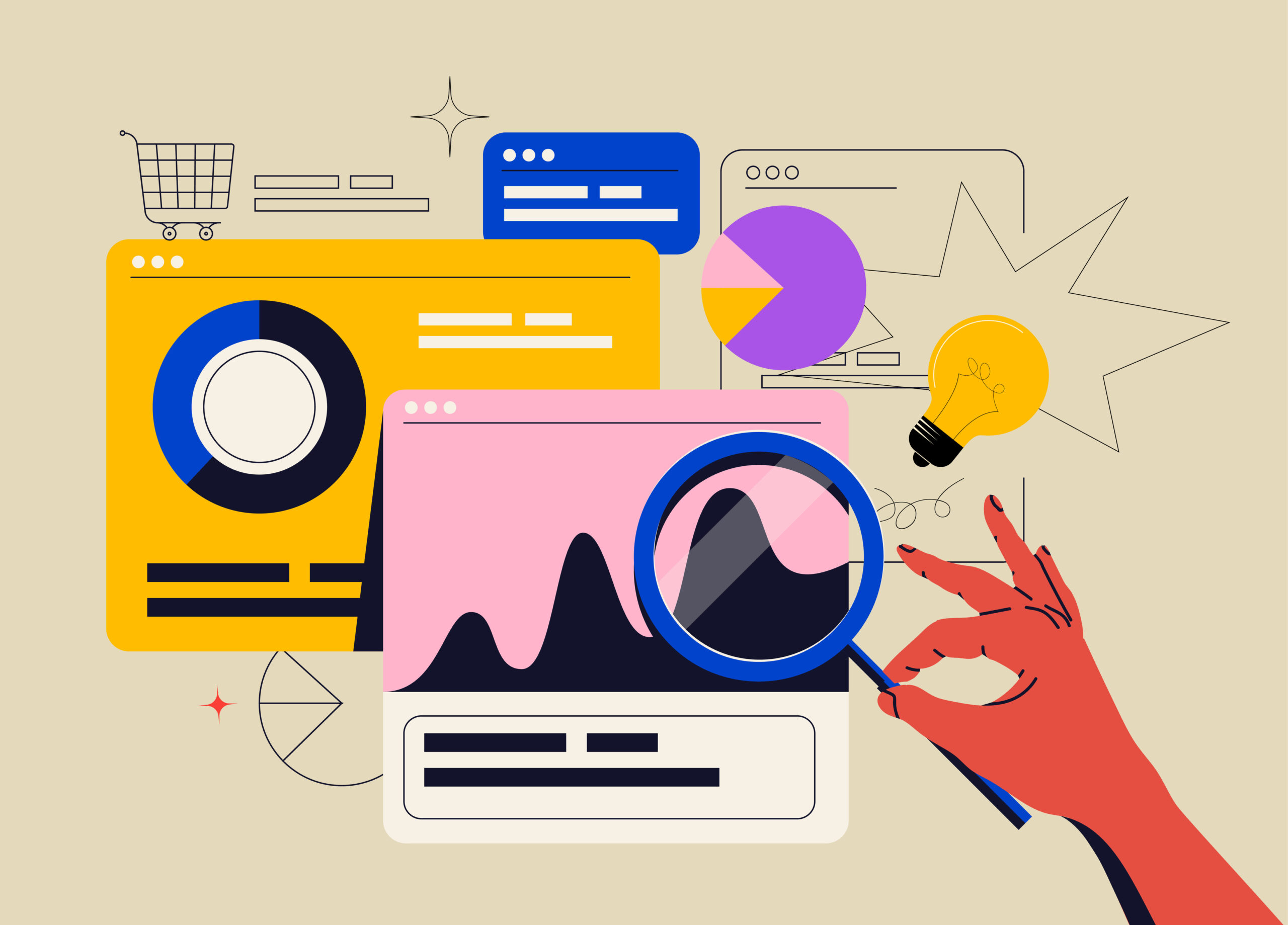One of the hottest questions in marketing these days is: are you in, or are you out? Many brands are setting up in-house teams to do work traditionally done by external agencies, giving birth to a new advertising and marketing model that may just have staying power.
The Association of National Advertisers, or ANA, has been doing a study every five years called The Continued Rise of the In-House Agency. The 2023 edition shows that 82% of marketers now have in-house agency teams — up from 78% in 2018, 58% in 2013, and just 42% in 2008.
What is an “in-house agency”?
For the ANA study, “in-house agency” was defined as “a department, group, or person that has responsibilities that typically are performed by an external advertising or other MarCom agency.”
In-house agencies, sometimes called IHAs, center on an internal marketing team that handles advertising exclusively for the company. IHA employees leverage their in-depth knowledge of the brand and its needs to create marketing strategies and craft campaigns without the help of an external party.
The ANA report “definitively shows that in-house agencies have become a firmly entrenched part of the holistic marketing ecosystem and are now a mainstay among a majority of marketers,” said ANA CEO Bob Liodice. But he hedged, “Agencies still play an important role for marketers, witnessed by the fact that 92% of respondents still use them. But the growth of in-house capabilities has clearly changed the client/agency relationship over the past 15 years.”
In-house versus External
Moving advertising and creative in-house is one of the most popular trends in marketing — but there is no one-size-fits-all solution. Some companies may find the initial time and investment to set up an in-house team outweigh the possible benefits. Two distinct IHA models have emerged: in-house and hybrid in-house agencies.
The completely in-house agency builds out all the digital marketing functions within the company, which gives the business total control of its data, the ability to shift tactics quickly, and confidence that privacy regulations are being followed with data. Contrast that with agency marketing — the traditional model — where marketing and advertising work is outsourced to an external team that manages all a company’s marketing and advertising work. Agencies theoretically have the strategy, connections, resources, and know-how to successfully promote a business. They often have teams dedicated to specific tasks like strategy, media buying, copywriting, design, project management, and account management who interface with the client.
Somewhere in between, we have a hybrid in-house agency model, where critical data is owned and lives with the brand. The brand usually also owns the media accounts, adtech accounts, and data management and has a small team dedicated to managing external agency activity with clearly defined goals. Marketing campaign infrastructure and accounts live with the in-house company team, while an external agency runs campaigns and handles digital data. This model often works well for companies with small digital marketing teams that need more resources and know-how to manage data in-house. Brands will often outsource media buying, especially programmatic buying, which helps explain the growing popularity of the hybrid model.
In-house marketing and external advertising agencies each have positive and negative aspects; the utility of each option varies depending on your business. Here are some pros and cons of each.
First, the pros of in-house agencies:
- Cost — Companies often find that having an in-house agency costs less to fund and maintain, particularly for small companies. A different ANA study showed that cost efficiency is the top benefit that brands with in-house teams cite, followed by brand knowledge and nimbleness.
- Communication improvements – An IHA bolsters communication internally between the marketing team and other departments, allowing for better cross-functional sharing of information and resources and boosting collaboration. This can help the marketing team complete projects faster, sparking new ideas and opportunities.
- Brand knowledge — An IHA is steeped in knowledge of the brand they work for and is familiar with all aspects of the industry, enabling them to fully assess the company’s needs and craft marketing strategies that best fit at any given moment.
- Control — Having transparency into costs and operations, especially in media buying operations, makes it much easier to identify and implement optimization tactics.
- Data/tech ownership — As first-party data ownership becomes increasingly critical in a cookie-less, privacy-first world, there are advantages to having marketing technology and adtech in-house.
And now, some cons of IHAs.
- Talent acquisition timeline — Building an in-house marketing team takes time. It may require an extended period to recruit, identify, interview, hire, and onboard new candidates.
- Recruitment costs — Whether companies pay outside recruitment agencies or hire an in-house recruiter, there is a cost associated with talent acquisition.
- Stagnant creative — An in-house team may come to rely on just a few creative styles and strategies, which can impact the ongoing success of your company’s marketing.
Here are the pros of working with an external agency:
- Advertising fluency — Ad agencies have typically worked with hundreds and sometimes thousands of clients, which means they’ve pretty much seen it all. An ad agency may suggest activations or concepts that a brand has not considered, opening the door for innovative engagement and messaging.
- Resources — Ad agencies have access to resources like software, high-end printers, digital equipment, and other tools that in-house marketing teams often can’t afford.
- Connections — You know the adage, “it’s not what you know, it’s who you know” — and that holds especially true for ad agencies, which typically have connections to production companies, advertising platforms, and high-level execs that can elevate exposure for a company.
- A plethora of creativity — With many employees and specializations, ad agencies have a leg up on offering cutting-edge marketing strategies and activations.
And now, some cons about working with traditional ad agencies.
- Less in-depth knowledge of your brand — Agencies have many clients, so they must learn many different brand stories. Businesses must teach their agency about their products, audience, culture, goals, and future vision. This takes time, and time cost money.
- Many clients (sometimes too many) — With numerous clients and multiple campaigns to manage simultaneously, an agency may be unable to dedicate sufficient time or resources to a specific company’s needs, which can translate to long wait times for deliverables.
- Less creative control — Because you have less direct oversight, it can be difficult to guide an external team to produce deliverables that fit your vision.
How to choose between an in-house agency and a traditional ad agency
Here are some considerations when deciding which option is best for your company.
- How fast does your company need to improve its marketing strategies?
An ad agency can be a more time-effective way to move the needle on your company’s brand presence. If there’s time to build a top-tier in-house marketing team, that could be a better option. - What’s your marketing budget?
Budget is a crucial consideration, as it determines what kind of team can be hired in-house and what kind of services the company can afford with an outside agency. Hiring an in-house team will typically cost more, as you’ll pay salaries rather than hourly rates. Compare and contrast costs and balance them with your timeline to help you decide. - What are your organization’s needs?
Determine the short- and long-term goals for marketing efforts and assess which areas need improvement. If just a few components of your marketing campaigns require management, perhaps an in-house option is right for you. But if the brand requires a complete rethink of its advertising efforts, an ad agency may be the right choice.
Many companies like to have their cake and eat it too by choosing not to choose between IHAs and traditional agencies.
For organizations interested in dipping their toe into the world of in-house agencies, without all the time and initial financial outlay to set up an IHA team, there are companies that can provide ready-to-go creative in-house marketing teams. Creative360, Creative Circle’s services division, delivers fully packaged solutions powered by a team curated for your specific needs. You can step right in with a brand-ready team of creative specialists who provide bespoke solutions to expand your team’s capabilities and extend team capacity.
__________________________________
Takeaway
Marketing is one of the main drivers of a brand’s success. Some companies find working with external marketing partners simpler, while others prefer to manage their brand’s presence in-house.
Whatever choice is right for your business, it’s clear that companies are pivoting how creative, adtech, data, and operations are structured into a more collaborative model. Brands are handling more of the tasks historically managed by external agencies in-house — redefining how and where advertising and branding messages are crafted. External agencies continue to be big players, but a realignment is taking place.
If you want to see what a consulting-based IHA can do for you, please reach out so we can discuss your creative marketing needs.



